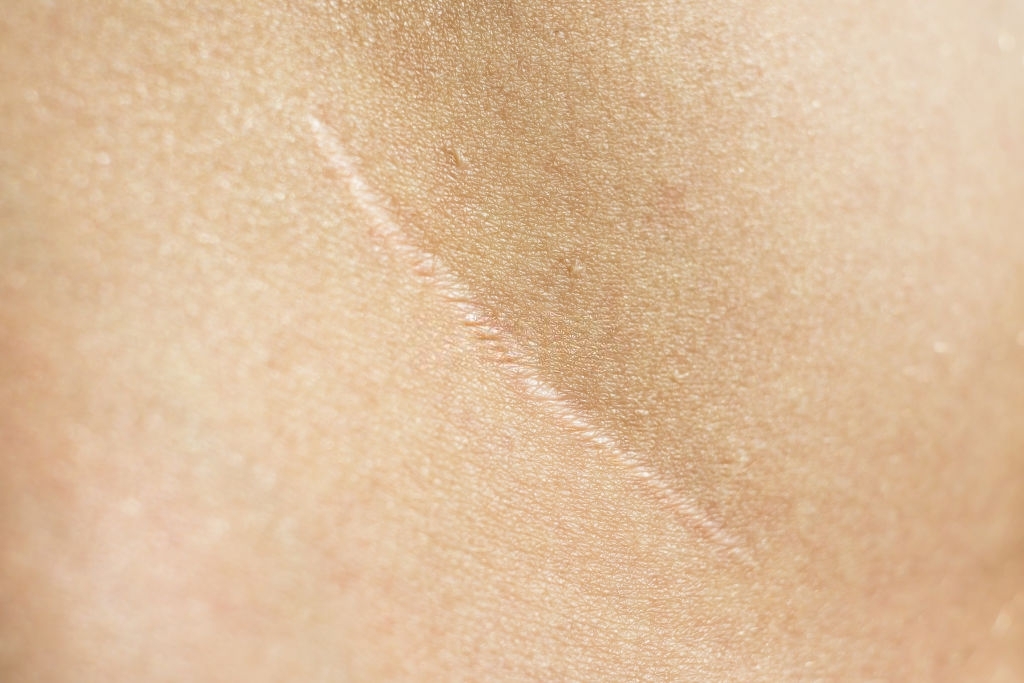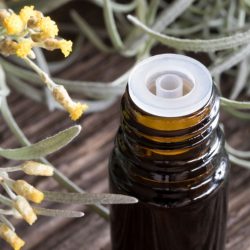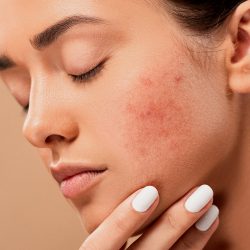Hippocrates said that “if Man gets sick, he finds the solution in nature, if he knows how to look at it”. Indeed, Mother Nature provides Man with everything he needs to meet his health needs.
In his book “Aromatherapy: healing yourself with essential oils”, Dominique Baudoux indeed offers many formulas based on essential oils which have a curative aim for the skin, such as the preparation for small wounds with essential oils by example.
Scars are the traces of damage to the dermis, once the tissue has repaired, following an accidental wound or a surgical incision. Depending on its origin and whether or not the healing process is going well and depending on your skin, the scar that remains is more or less beautiful.
In some cases, the use of a dermatologist, or even a surgeon, may be necessary. However, it is possible to reduce scars on your own, recent or old, especially by massages with vegetable oils and essential oils.
The different types of scars
During a normal healing process, scars go through an inflammatory phase in which they swell and redden, then a maturation phase in which they shrink and become pale. It takes about 12 to 18 months for them to take on their final appearance.
Hypertrophic scars are scars that have thickened during the healing process, but not beyond the edges of the original wound. Over time, they eventually turn pale and flatten slightly.
Keloid scars are very thick, blistered, red or purple scars that protrude from the edges of the original wound, forming like a growth. They have no tendency to improve spontaneously.
The 10 anti-scar essential oils
1- Argan vegetable oil. A beauty oil with multiple virtues. Argan oil is particularly effective in the treatment of scars and spots. It contains an active ingredient from the sterol family which gives it a restorative and regenerative action on the skin in the event of burns, acne scars and chapped skin.
2- Rosehip vegetable oil. An oil with rather exceptional healing, regenerating and “depigmenting” properties. It is rich in essential fatty acids, vitamins A, C and E. It acts as a tensor of the epidermis and reduces scars, spots and stretch marks.
3- Macadamia vegetable oil is used to regenerate and nourish the skin and make it soft and smooth. Macadamia vegetable oil is softening, regenerating, and improves microcirculation.
4- St John’s Wort vegetable oil for its anti-inflammatory and analgesic properties. St John’s Wort vegetable oil protects, helps restore soft, supple skin and repairs sensitive skin.
5- The essential oil of wintergreen: anti-inflammatory, exfoliating, improves hypertrophic and keloid scars.
6- The essential oil of Italian helichrysum: healing, anti-inflammatory, anti-hematoma, improves hypertrophic and keloid scars.
7- Essential oil of cistus ladanifère: regenerative, improves microcirculation.
8- Rose geranium essential oil: regenerative, improves microcirculation
9- tea tree essential oil
A must have for the healing and prevention of acne pimples. The essential oil of tea tree is antibacterial, antifungal and anti infectious. Its active molecule is terpineol-4. Its anti-infectious properties are recognized and have been the subject of numerous publications and academic studies. Placed on a sterile compress or on the skin, it allows disinfection without traumatizing the exposed flesh. This EO also provides a complementary detersive role (that is to say tissue cleaning), particularly useful for promoting healing as early as possible.
10- Lavender essential oil
A healing, anti-inflammatory and analgesic essential oil. To be applied by drop, targeting a small area or by diluting in a vegetable oil.
Example of anti-scar essential oil blend
– 15 ml of rosehip HV;
– 10 ml of macadamia, Argan or St. John’s Wort HV;
– 12 drops of each chosen EO.
Precautions for use
– Pregnant women should avoid essential oils.
– For essential oils, always make a test and wait 48 hours to avoid any risk of allergy or skin reaction.
Massage your scar with your blend of essential oils
The benefit of massaging the scars with essential oils then allows:
- soften the tissues and thwart the process of fibrosis;
- reduce adhesions;
- to stimulate microcirculation;
- and gradually improve the appearance of the scar;
- Massage for 5 minutes 2 times a day.
- Massage for a long time to get results: at least 2 or 3 months.
Arnaud C. (Doctor of pharmacy)






Hello, I would like to learn whether you can prepare an anti-scar solution with essantial oils for the stichtes on demand?
Dear Sermin,
Thank you for your message! For a customized solution with essential oils for scars, we kindly invite you to submit your request using our contact form, which you can find on our website.
This will allow our compounding team to carefully review your needs and provide you with an appropriate quote. Please don’t hesitate to include as many details as possible about your expectations so we can respond effectively to your request.
Wishing you a lovely day,
Élodie
Soin et Nature